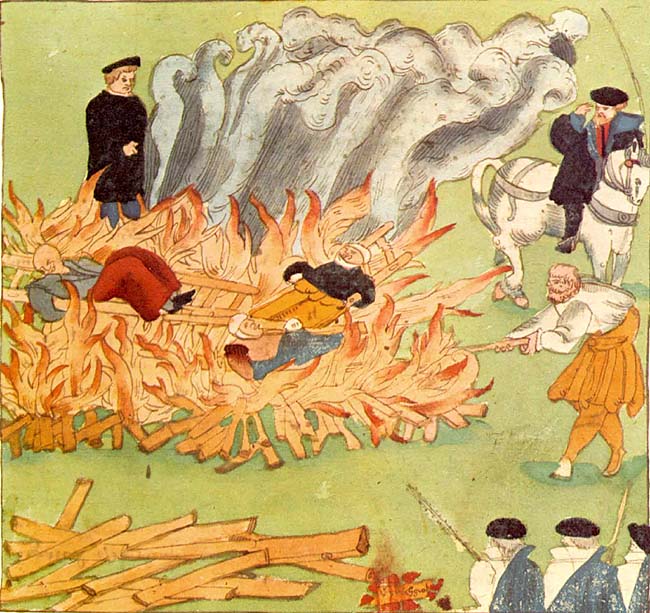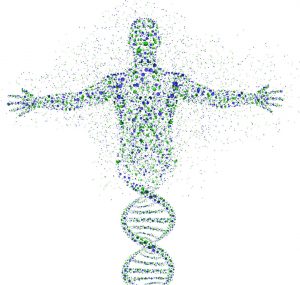In today’s world, when someone thinks of a witch, they normally picture one of a few things: the infamous Wicked Witch of the West that was out to get our beloved Dorothy; Bette Midler’s crazy looking character in Hocus Pocus; or a sparkly, purple and black ‘Party City’ outfit that young girls wear as a sort of ‘right of passage’ Halloween costume. Some may even think back to their high school history lessons about the Salem Witch Trials during the late 1600’s in colonial America. These images, however, are drastically different from those a 15th-century European would have pictured. They would have conjured up the image of a woman who wasn’t religious, who went against social norms, who had supernatural powers, and who therefore was most definitely associated with the devil.1 These Europeans would have pictured the faces of the many women accused and killed in the witch hunts of the time that were in large part driven by skewed societal perceptions, religious fears, and hysteria.
The witch hunts in Europe occurred on a much larger scale than those that took place in Salem Village. Records suggest that the hunts began as early as the 14th century and went on until around 1650, gaining the most momentum during the late 15th century. In total, the executions of supposed witches by Europeans numbered between 200,000 and 500,000, with 85% or more of those accused of and executed for witchcraft being women.2 Additionally, around 95% were specifically poor, old, single, or widowed women.3 Based on social perceptions of the time, these numbers, quite frankly, are not surprising. It is said that “heresy evidence, a major element during the dominance of the European witch craze, was that Satan recruited servants, mostly women, by signing a pact with them and turned them into his sexual subordinates.”4 It was understood by society members that these women who made such a pact with the devil were “female witches [given] the opportunity to commit evil deeds,” and that as a result of their pact and evil-doings, “[their] souls…belonged to the devil, and these women would serve in hell upon their death.”5 Society members also understood that single, elderly, poor, and/or widowed women were outcasts, and in some cases were even thought to be living sinful lives. The perception of all women as impressionable, and the perception of certain types of women who were generally unaccepted, contributed largely to the witch craze in Europe.
Perhaps the biggest factor that fueled the witch hunts of the time, however, stemmed from the religious conflicts of the age. Fifteenth-century Europeans were extremely devout Christians, and often viewed anything different as a threat to their religion. A common belief among many was that certain people possessed supernatural powers, and at the end of the fifteenth century, pronouncements from the era’s theologians began to circulate. They suggested that those who possessed diabolical powers were witches and drew their abilities straight from the devil himself.6 These beliefs were intricate, and included details about supposed witches flying to foreign places on broomsticks to attend a witch’s Sabbath, worship the devil, create special potions, and even engage in sexual relations with the devil.7 As a result of these beliefs, assumptions and rumors began to spread, mostly whenever something unexpected or inexplicable happened, that the event had been caused by a witch. These bad events ranged from crop failures to a woman’s inability to conceive.8 Given this extreme characterization, it becomes evident that Europeans of the time took witches, their powers, and their relationships with the devil very seriously. But why? What led to the widespread fear, accusations, and killings of witches in Europe?

As mentioned earlier, Europeans did not take their religious beliefs lightly, and any threats to Christianity were treated with utmost scrutiny. Additionally, because the religious wars between Catholics and Protestants occurred during the same time at which the witch hunts peaked, nothing was more concerning to a European Christian than someone who threatened their form of Christianity. British historian Norman Cohn summed up the need for Europeans to find and kill witches as “the need to create a scapegoat for an unacknowledged hostility to Christianity.”9 In this context, it may be understood that Europeans of the time were influenced–probably by the religious wars that were happening in their homelands at the time–into believing that these conflicts were a result of witches and their relationships with the devil. Other common religious beliefs that helped to fuel the fear and persecution of supposed witches included the “religious-driven conception of the relationship between demonology and witchcraft,” which elicited a belief “that the world served as a battlefield upon which an ongoing struggle between Satan and God was portrayed.”10 In a society where such a common–and detailed–belief regarding the continuous war between God and the devil was prevalent, it makes sense that rumors of witches would cause fear enough to spark the type of witch hunts that took place in Europe between the fourteenth and sixteenth centuries. Furthermore, the witch hunts took place during the heat of both the Protestant Reformation and the Catholic Counter-Reformation; therefore, those who followed the Protestant or Catholic faiths were primary targets.11
It is said that Protestant authorities who searched for and prosecuted witches acted more harshly than did authorities of the infamous Spanish Inquisition.12 Catholic witch hunting leaders also went out of their way to condemn witches by publishing the Malleus Maleficarum in 1487; this document made “demonology a severe offense punishable by religious and subsequently secular authorities.”13
For these reasons, the witch hunts were widespread throughout Europe and lasted for over 200 years. Although widespread across all of continental Europe, they were generally concentrated in areas where Catholics and Protestants lived in close proximity to each other. In most cases between the fourteenth and sixteenth centuries, the hunts occurred in waves. Catholic lands in Germany were hit with a wave in the 1560s and 1570s, and again in the 1610s and 1620s; large waves occurred simultaneously throughout small communities within the Holy Roman Empire.14 Protestant lands affected the most were Scotland and the Swiss territory of Vaud, conducting nearly 3,000 executions combined.15 Those accused of witchcraft were made to stand trial and were, more times than not, found guilty and executed by hanging or burning.16 In some cases, accused witches were even tortured and forced into making confessions.17

As with other targeted mass killings throughout history, it can be noted that the European witch hunts that took place between the fourteenth and seventeenth centuries were largely influenced by several social and political factors. Most evident are the religious views, opinions, and hostilities that existed among European communities and peoples at the time. Furthermore, the fact that a majority of those witches accused and executed were women who were viewed as being outside societal norms suggests that they were persecuted for reasons of social standards and class influence. Overall, this dark period in European history was clouded with judgement, fear, and religion-fueled wars that–in one way or another–led to the execution of hundreds and thousands of supposed witches. Whether or not the executed were actually witches, we may never know. One thing that is almost certain, however, is that the lesson of redefining moral boundaries that should have been learned from the European witch hunts, instead went unnoticed, allowing similar persecutions to occur in the New World less than fifty years later.18
- Jerry H. Bentley, Herbert F. Ziegler, and Heather E. Streets-Salter, Traditions & Encounters: A Brief Global History from 1500 to the Present, Fourth, Vol. 2 (New York: McGraw-Hill Education, 2016), 376. ↵
- Nachman Ben-Yehuda, “The European Witch Craze of the 14th to 17th Centuries: A Sociologist’s Perspective,” American Journal of Sociology 86, no. 1 (1980): 1. ↵
- Jerry H. Bentley, Herbert F. Ziegler, and Heather E. Streets-Salter, Traditions & Encounters: A Brief Global History from 1500 to the Present, Fourth, Vol. 2 (New York: McGraw-Hill Education, 2016), 376. ↵
- Nachman Ben-Yehuda, “Witches,” in Encyclopedia of Death & the Human Experience, edited by Clifton D. Bryant and Dennis L. Peck, Vol. 2 (Thousand Oaks, CA: SAGE Publications, 2009), 996. ↵
- Nachman Ben-Yehuda, “Witches,” in Encyclopedia of Death & the Human Experience, edited by Clifton D. Bryant and Dennis L. Peck, Vol. 2, (Thousand Oaks, CA: SAGE Publications, 2009), 996. ↵
- Jerry H. Bentley, Herbert F. Ziegler, and Heather E. Streets-Salter, Traditions & Encounters: A Brief Global History from 1500 to the Present, Fourth, Vol. 2 (New York: McGraw-Hill Education, 2016), 376. ↵
- Jerry H. Bentley, Herbert F. Ziegler, and Heather E. Streets-Salter, Traditions & Encounters: A Brief Global History from 1500 to the Present, Fourth, Vol. 2 (New York: McGraw-Hill Education, 2016), 376. ↵
- Jerry H. Bentley, Herbert F. Ziegler, and Heather E. Streets-Salter, Traditions & Encounters: A Brief Global History from 1500 to the Present, Fourth, Vol. 2 (New York: McGraw-Hill Education, 2016), 376. ↵
- Madeleine Jeay, “French ‘Witches’ (14th–16th Centuries),” in Women in World History: A Biographical Encyclopedia, ed., Anne Commire (Detroit: Yorkin Publications, 2002), 774. ↵
- Nachman Ben-Yehuda, “Witches,” in Encyclopedia of Death & the Human Experience, eds. Clifton D. Bryant and Dennis L. Peck, Vol. 2 (Thousand Oaks, CA: SAGE Publications, 2009), 996. ↵
- Alfred J. Andrea, and Carolyn Neel, eds., “Witch-Hunting in Western Europe: Trial by Ordeal–Witch-Hunts and Methods of Extracting Confessions,” World History Encyclopedia (Santa Barabara, CA: ABC-CLIO, 2011), 880. ↵
- Alfred J. Andrea, and Carolyn Neel, eds., “Witch-Hunting in Western Europe: Trial by Ordeal–Witch-Hunts and Methods of Extracting Confessions,” World History Encyclopedia (Santa Barabara, CA: ABC-CLIO, 2011), 880. ↵
- Alfred J. Andrea and Carolyn Neel, eds., “Witch-Hunting in Western Europe: Trial by Ordeal–Witch-Hunts and Methods of Extracting Confessions,” World History Encyclopedia (Santa Barabara, CA: ABC-CLIO, 2011), 880. ↵
- H. C. Erik Midelfort, “Witchcraft,” in Europe, 1450 to 1789: Encyclopedia of the Early Modern World, ed. Jonathan Dewald, Vol. 6 (New York: Charles Scribner’s Sons, 2004), 223. ↵
- H. C. Erik Midelfort, “Witchcraft,” in Europe, 1450 to 1789: Encyclopedia of the Early Modern World, ed. Jonathan Dewald, Vol. 6 (New York: Charles Scribner’s Sons, 2004), 223. ↵
- Jerry H. Bentley, Herbert F. Ziegler, and Heather E. Streets-Salter, Traditions & Encounters: A Brief Global History from 1500 to the Present, Fourth, Vol. 2 (New York: McGraw-Hill Education, 2016), 376. ↵
- Madeleine Jeay, “French ‘Witches’ (14th–16th Centuries),” in Women in World History: A Biographical Encyclopedia ,ed. Anne Commire (Detroit: Yorkin Publications, 2002), 774-775. ↵
- Nachman Ben-Yehuda, “The European Witch Craze of the 14th to 17th Centuries: A Sociologist’s Perspective,” American Journal of Sociology 86, no. 1 (1980): 24-25. ↵



138 comments
Joshua Breard
After reading this article, I could not help but think about the Salem Witch Trials that happened in the United States. The two events parallel together where people would sought out to find the witches of the towns at all costs, lives were lost in the process, and how the primary targets were women who were either widowed or an outsider to the community. Very good informative article!
Auroara-Juhl Nikkels
I think that the Salem Witch trials are an important piece of history that not to many people know about or acknowledge. I think that it shows just how radical every religion there is can get and not just the ones that we think of as “bad.” I think it is a interesting article and your title and first paragraph really pulled me in. I wasn’t too sure where this article was leading.
Josselyn Arrieta-Meraz
I liked how you made a really relevant connection between the perception of what many of us think when the term witch is mentioned, and describing that total opposite of what it was know to be in the fifteenth century. In my opinion at the time many were trying to find an explanation and meaning of life, why things occurred when they did, and tried to pin them on individuals in order to feel some type of resolution. These women where innocent of what they were victimized as, and because of what many thought to believe of this image grew over the years into the modern world on what a witch is and looks like.
Michael Mandujano
This article was very interesting, and I was attracted to this article due to its featured image and catchy title. I enjoyed viewing the illustrations throughout the article. In fact, after reading this article I have gained a greater overview on how people were heavily influenced to become witches and participate witchcraft throughout the 15th century. Although witches are spooky creatures, I bet witch hunting would be exciting to participate in.
Amanda Figueroa
The introduction was very well written to where I was completely intrigued as to what kind of witches she was going to talk about if it wasn’t any of the ones mentioned. I had never heard of the witch hunts before and yet this article has all the information and interesting facts to have me informed. It’s very intriguing reading about the supposedly diabolical powers and where we get the stereotypical idea of flying witches.
Veronica Spryszynski
When I think of the word witch I think of the Salem trials. Article has a lot of information about the ideas of both protestant and catholic views as well as other views. I don’t think the women should’ve been accused of being a witch of they were forced to make confession, it shows how women were treated before then and their lesser rights. The burning of these women seems too violent of a punishment for their actions, you show how morals and ways of dealing with things have changed over time.
Jazmin Pizana
Very interesting article and a great read! The introduction was eye-catching. I’ve always found the Salem witch trials very interesting and enjoyed reading the crucible during school. It’s crazy to see how many women were accused of being witches and ended up being convicted. It’s tragic to see how almost all of them were considered outcasts and accused because they were different from society.
Mario Sosa
People tend to view the Salem Witch Trials as a huge event, but that seems very insignificant compared to what happened during the 15th century. It is almost unbelievable that about half a million were killed over this hysteria of witchcraft. Interesting how it was mostly old, single, and poor women who were the victims of this event. Fascinating read, great work on the article!
Mario De Leon
Super interesting article. I loved your title and featured image you chose to use. I like how you started off by addressing the stereotypes of a witch’s image and gave us the definition of a witch in the 1600’s. this was a very well written and organized article. I have always found witch hunts interesting because I’m curious to understand what makes people so irrational that they hunt out women and accuse them of being witches.
Anayeli Prieto
very eye catching article! The Salem witch trials were very well known and unfortunately, I have never heard of these story! the fact that the targeted people were the poor and the elderly was very unfortunate. they already had to deal with poverty and possibly dying of old age. Everyone comits mistakes and we have to learn from them, instead of being judged for them. witchcraft assumptions were very intense and many deaths took place that shouldn’t have been taken.